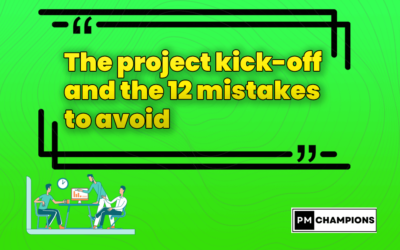Why conduct a satisfaction survey?
The project satisfaction survey is an obligatory exercise in project management.

It is part of the prerogatives of the project manager as well as its objectives.
Satisfaction is an indicator of success, a KPI , but above all it is the most reliable way to know the customer’s opinion on the service provided by the service provider.
As such, the survey is an essential lever for continuous improvement.
It is also an excellent way to objectify a client’s feeling about the course of a service and to be able to counter possible overreactions to one-off events.
How to carry out the satisfaction survey?
The principle of the project satisfaction survey is simple: the evaluation focuses on 5 criteria to be chosen from the 12 proposed:
- Fulfilment of commitments
- Appropriateness of the proposed organization
- Skills mobilized
- Professionalism of the staff
- Quality of collaboration
- Duty to advise
- Adaptability
- Relevance of the technical solution
- Quality of Deliverables/Deliveries
- Knowledge Management
- Security & Privacy
- Other Specific Criteria

It is the customer who determines the 5 evaluation criteria during the kick-off meeting. It also associates a weighting weight between 10% and 60%, so that all 5 criteria represent 100%.
During the course of the project, the client will be invited by the project manager to evaluate the service provided by assessing each of the 5 criteria on a value scale ranging from “Bad” to “Excellent”.
The result is a score out of 5 points.
When should the survey be conducted?
This should be decided with the customer in the launch phase. However, care should be taken to carry out the survey on a regular basis with an interval of no more than 6 consecutive months.
For multi-year projects, such as agencies, the pace will therefore be set on a calendar basis (every 3 to 6 months, for example).
For short- or medium-term projects, such as fixed price, a satisfaction survey at the end of the project (e.g. end of warranty) and – depending on the duration of the project – interim surveys based on the milestones or phases of the project (e.g. the delivery of a first batch) will be planned.

It is a good practice to have the satisfaction survey completed one to two weeks before each Steering Committee and to present the current evaluation and developments since the beginning of the project during the body.
In this way, it is possible to follow the objective trends of quality in the selected areas in the Steering Committeewith the customer, and it is easier to put into perspective the one-off incidents that sometimes occur and that can “pollute” a steering committee.
If the satisfaction survey is used for a project (project with fixed price), it can also be useful to set it up as part of the individual follow-up of employees, in a system operationally managed by the client.
Indeed, in this way, the client will not be able to overwhelm an employee whom he has judged positively on several evaluations (any resemblance to real facts is not coincidental).
Details about the satisfaction survey
Other initiatives
The project satisfaction survey is complementary to the NPS (Net Promoter Score) and does not replace it: the two approaches are distinct and coexist.
Similarly, it is quite possible to carry out additional satisfaction measures which, again, are not a substitute for the project satisfaction survey:
sprint barometers as part of the A² (Augmented Agile) methodology or satisfaction surveys at the level of project teams.
Score Split
The score obtained at the end of the project satisfaction survey is an indicator.
The survey must be archived in the project’s document repository and the score entered in the project monitoring tools to be known to the Delivery management.
Action plan
The result of the project satisfaction survey is not just an indicator.
The project manager must initiate an explanation meeting with the client to dispel any doubts and misunderstandings.
They must also produce an action plan, then return it to the client, in order to address areas for improvement operationally. This action plan is integrated into the survey file in the lower part.






0 Comments